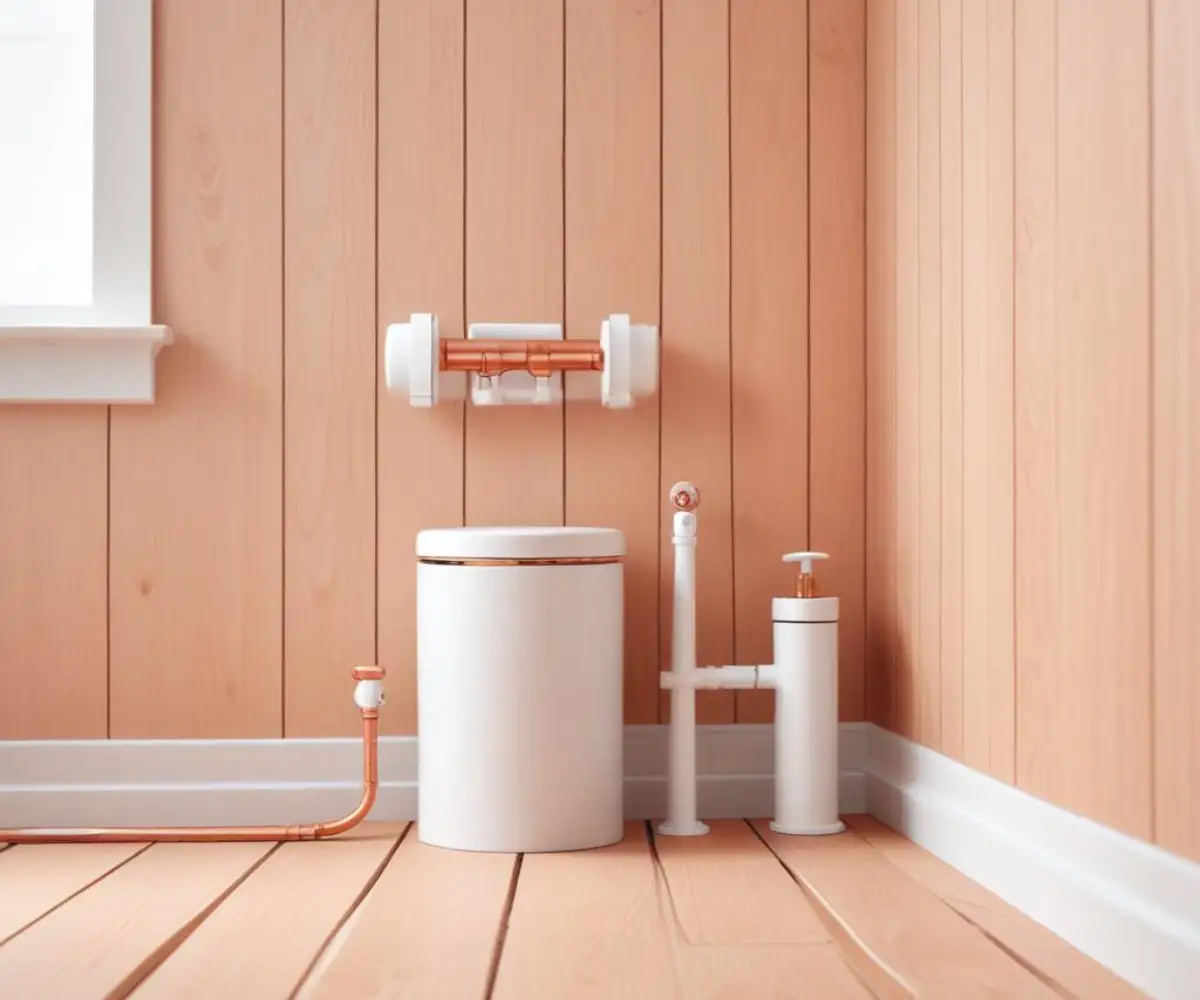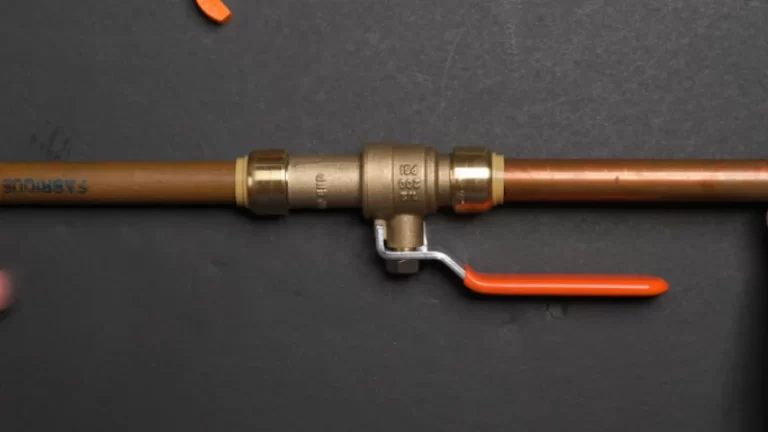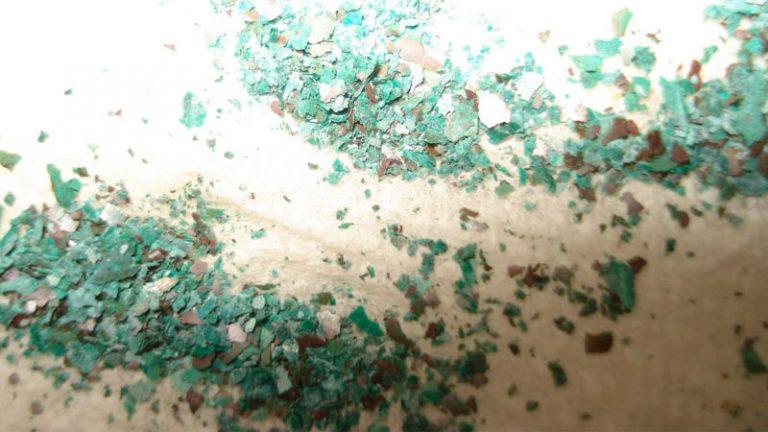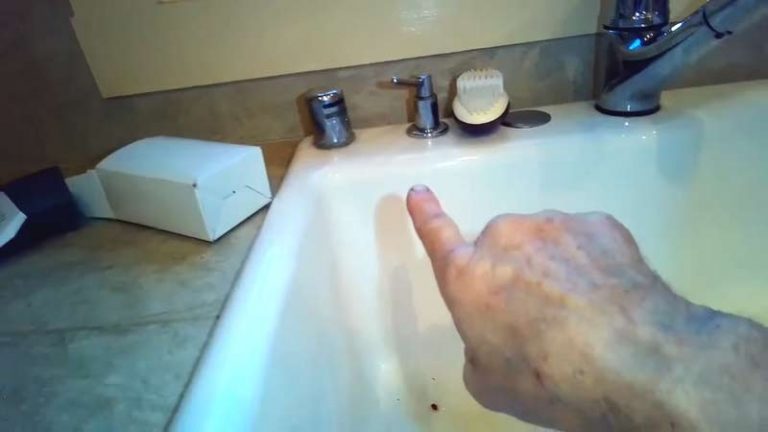Bathroom Vanity Plumbing Through Floor: Your #1 Guide
Dealing with bathroom vanity plumbing that comes through the floor can feel like a high-stakes puzzle. One wrong measurement, one misplaced pipe, and your renovation grinds to a halt. This configuration, while common, leaves absolutely no room for error.
Unlike wall plumbing that offers some flexibility behind drywall, floor pipes are often set permanently, especially in concrete slabs. Understanding how to approach this setup is not just important; it’s critical for a leak-free, professional-looking bathroom.
You'll Learn About
Why Floor Plumbing? The Unseen Logic Behind It
You might wonder why any bathroom is designed this way. The most common reason is the home’s foundation. For houses built on a concrete slab, running pipes up through the floor is often more direct and cost-effective than trenching into the concrete foundation to run them up through the walls.
Aesthetic choice also plays a role. Freestanding vanities, especially those placed away from a wall, rely on floor plumbing to maintain a clean, open look. When executed perfectly, this setup hides the unsightly pipes, contributing to a minimalist and modern design.
The Non-Negotiable First Step: Perfect Rough-In Measurements
Before a single pipe is cut or a hole is drilled, you must know the exact specifications of your vanity. Guessing measurements is the single most costly mistake you can make. The location of the drain and the hot and cold water supply lines must be perfectly mapped out based on the vanity cabinet’s design.
These measurements determine where holes are cut in the subfloor or where pipes are stubbed up through the concrete. Once the floor is finished, moving these pipes can be a massive undertaking involving jackhammers and significant expense. Always have the vanity’s specification sheet in hand before any plumbing work begins.

Decoding Rough-In Dimensions
Precision is key. While every vanity is different, there are standard dimensions that serve as a reliable starting point for most installations. Consulting these standards helps ensure your plumbing will align correctly with both the fixture and local building codes.
The table below outlines typical rough-in measurements for bathroom vanity plumbing. Always cross-reference these with your specific vanity’s manufacturer instructions.
| Plumbing Component | Standard Dimension from Finished Wall | Standard Spacing |
|---|---|---|
| Drain Pipe Centerline | Varies by vanity; typically centered on the sink basin. | N/A |
| Hot & Cold Supply Lines | Aligned with drain centerline, slightly behind it. | 4 to 8 inches apart. |
| Stub-Out Height Above Floor | 4 to 6 inches above finished floor. | N/A |
Choosing Your Materials: The Foundation of a Leak-Proof System
The pipes you choose are just as important as their placement. For drain lines coming through the floor, PVC (Polyvinyl Chloride) and ABS (Acrylonitrile Butadiene Styrene) are the most common choices due to their durability and ease of installation.
For water supply lines, PEX (Cross-linked Polyethylene) is often preferred for its flexibility, which can be a lifesaver when navigating tight spaces. Copper remains a reliable, albeit more rigid and expensive, option.
The Pro-Tip a DIY Guide Might Forget
One of the most critical, yet often overlooked, steps is protecting pipes that pass through a concrete slab. Always sleeve your copper supply lines in a protective plastic sheath. This small step prevents direct contact between the copper and the concrete, which can cause corrosion over time and lead to pinhole leaks that are disastrous to locate and repair.
The Installation Process: A Step-by-Step Guide
With planning complete and materials in hand, the installation can begin. This process demands patience and precision. Rushing through any of these stages can compromise the entire project.
Step 1: Finalize and Measure Your Vanity
Before any cuts are made, have the vanity on site. Measure the exact locations where the drain and supply lines will enter the cabinet from the floor. Transfer these measurements precisely to the floor.
Step 2: Cutting and Stubbing Out Pipes
For wood subfloors, use a hole saw or jigsaw to create clean openings for the pipes. For concrete, this work is best left to a professional with the proper cutting tools. The pipes should be “stubbed out” to extend several inches above the finished floor level to allow for easy connection.
Step 3: Sealing the Penetrations
This is a critical step to prevent moisture, drafts, and even pests from coming up through the floor. Use a quality silicone caulk or a pipe escutcheon (a decorative flange) to create an airtight and watertight seal around each pipe where it meets the floor. Do not skip this detail.
Step 4: Setting the Vanity and Connecting the Plumbing
Carefully lower the vanity over the pipes. From inside the cabinet, connect the water supply lines to the faucet and the P-trap to the sink drain and the floor drain pipe. This is where the accuracy of your initial measurements pays off.
Common Disasters and How to Dodge Them
Even with a solid plan, pitfalls exist. Being aware of the most common mistakes can help you avoid them entirely.
The Wrong P-Trap Configuration: A P-trap is essential for blocking sewer gases. With floor plumbing, you may need to create a P-trap assembly that seems unconventional, possibly running the pipe horizontally back towards the wall before turning down into the floor drain to create the proper trap seal. An improper “S-trap,” which goes straight down, is against code in most areas as it can allow water to be siphoned out, breaking the gas seal.
Inaccurate Vanity Placement: Misjudging the vanity’s final position by even half an inch can make pipe connections impossible without awkward, leak-prone offsets. Secure the vanity to the wall exactly where it will live before making final plumbing connections.
When to DIY and When to Call a Professional
Tackling floor plumbing can be a rewarding DIY project if you are simply replacing an existing vanity. However, if your project involves cutting concrete or relocating pipes, a licensed plumber is your best investment. The cost of a mistake far outweighs the expense of professional installation.
Understanding the full scope of work is vital. A professional can provide an accurate quote and prevent the kind of sticker shock some homeowners experience. For instance, while you might research the Lowe’s vanity installation cost, that price often assumes the plumbing is already in the perfect spot. Moving pipes is a separate, more complex job.
For larger bathroom renovations, you might be weighing all-in-one services against independent contractors. Asking is Re-Bath too expensive is a valid question, but remember to compare the costs of plumbing modifications in their package versus a dedicated plumber’s quote.
Final Touches: The Small Details That Matter
Once the vanity is installed and all connections are leak-free, don’t forget the finishing touches. Use decorative escutcheons or floor plates to cover the gaps where pipes emerge from the floor. These small, inexpensive parts provide a clean, professional finish that elevates the entire installation.
Also, ensure your new supply lines have their own shut-off valves, known as angle stops. This allows you to turn off the water to just the sink for future repairs without shutting off water to the entire house. Much like getting a detailed Kohler shower installation cost before work begins, planning for these small but crucial details ensures a better long-term outcome.
Frequently Asked Questions
Can I use any type of bathroom vanity if my plumbing comes through the floor?
Not all vanities are ideal for floor plumbing; floating or open-bottom styles will likely expose the pipes. Cabinet-style vanities that are flush to the floor are a better choice to conceal the plumbing. An installer can typically cut holes in the bottom of a cabinet to accommodate your existing pipes.
Why is most modern vanity plumbing routed through the wall?
Wall drains are preferred in modern homes because they hide the plumbing within the wall, offering a cleaner and more contemporary appearance. This setup is particularly beneficial for floating vanities, as it leaves the floor space underneath open and makes cleaning easier. Floor drains, more common in older homes, can sometimes limit your design options.
How do you properly connect a drain when the pipe comes from the floor?
To connect a drain pipe coming from the floor, you will attach a P-trap to the sink’s tailpiece and then to the floor drain. It is important to ensure this connection does not create an S-trap, which is prohibited by many plumbing codes as it can siphon water and allow sewer gases to escape. Using a short horizontal pipe after the P-trap before turning down into the floor drain helps prevent this issue.
What can I do to hide unattractive pipes under an open-style vanity?
If you have an open-bottom vanity, you can use decorative piping and flange covers, often called escutcheons, to create a more aesthetically pleasing look. Alternatively, a cabinet-style vanity will hide the plumbing completely from view. Boxing in the pipes with a custom-built cover that matches your vanity is also a viable solution.
Is it necessary to cut holes in my new vanity for the floor pipes?
Yes, you will likely need to cut access holes in the bottom shelf of the vanity cabinet to align with your water supply and drain pipes. This requires careful measurement of the pipe locations on the floor and transferring those marks to the vanity. A hole saw or jigsaw can then be used to create the openings for the pipes to pass through.
Your Blueprint for a Perfect Installation
Installing a vanity with plumbing through the floor is a task of precision. It begins with meticulous planning and accurate measurements long before any tools are picked up. By understanding the unique challenges of this configuration, choosing the right materials, and following a methodical installation process, you can achieve a flawless result.
Remember that the unforgiving nature of floor plumbing means there is no substitute for careful preparation. Get the measurements right, seal every penetration, and don’t hesitate to call a professional when the job moves from simple connections to complex pipe relocation. The result will be a beautiful, functional vanity that stands on a foundation of quality plumbing work.



